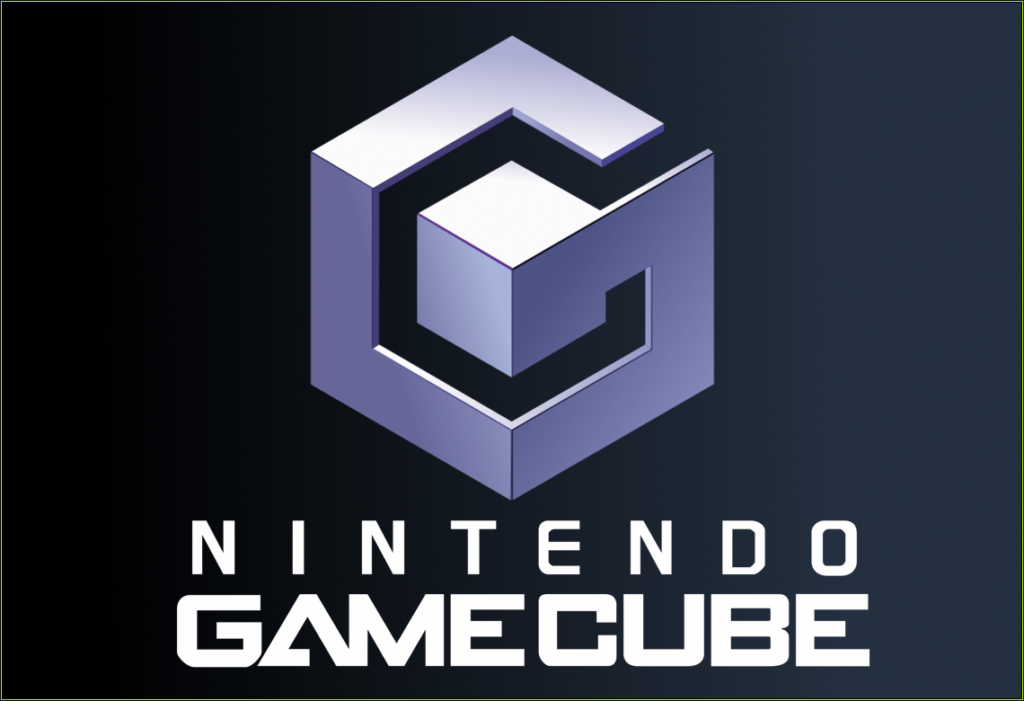Why are GameCube Games so Expensive?
If you’re a Nintendo fan, then you’re probably familiar with the GameCube. The appropriately-named console was released back in 2001 and quickly became a fan favorite. It may not have been as popular as the PS2 or the Xbox, yet why are GameCube games so expensive?
And now, even years later, GameCube games are still in high demand! Some titles are selling for crazy prices; just the other day, I saw Mario Kart: Double Dash go for a whopping $300 on Amazon! So, why are GameCube games expensive and so sought after? In this post, we’ll delve into the reasons and explore the GameCube’s 20-year long lasting impact on the gaming world.
Table of Contents
A Thrilling Dive into its Fascinating Historical Context!
The year was 2001, back when the N64 was reigning supreme and the PlayStation was gathering its own loyal fans. In a bold move that rocked the gaming world, Nintendo unleashed their fourth home console, the GameCube, in 2001. Unlike any other console before it, the GameCube boasted a revolutionary cube-shaped design that caught the attention of gamers worldwide. But the console’s unique appearance wasn’t the only feature that set it apart.
The GameCube was also the first Nintendo console to incorporate optical discs for games. This groundbreaking innovation allowed for better graphics and larger game sizes, giving gamers an unprecedented gaming experience. Plus, the console’s controller featured a distinctive layout that was comfortable to hold and intuitive to use.
But the GameCube didn’t have an easy road to success. It was released during the same generation as two other gaming giants, the PlayStation 2 and Xbox, and had to compete fiercely against them for market share. Despite this challenge, the GameCube proved to be a formidable opponent, thanks to its impressive library of games and unique features.
From beloved classics like Super Smash Bros. Melee and The Legend of Zelda: The Wind Waker to cult favorites like Eternal Darkness: Sanity’s Requiem and Pikmin, the GameCube’s game lineup was nothing short of impressive. And even today, GameCube games remain highly sought after by collectors and gamers alike.
Why are GameCube Games Expensive Even Today?!
It’s hard to believe that nearly 20 years after its release, GameCube games are still costing an arm and a leg; I seriously wish I bought Twilight Princess back when it was still only $60. But the truth is, there are a variety of factors that contribute to the high demand of these beloved classics.
Firstly, limited production runs are a significant factor. Many of the most popular GameCube games were only produced in limited quantities, making them rare and highly sought after by collectors. Additionally, the GameCube’s proprietary disc format was notoriously delicate, leading to a higher rate of disc failures and a decrease in available copies over time.
Nostalgia and collectibility also play a significant role. For many gamers, the GameCube was their introduction to the world of video games, and the memories and emotions associated with those games are priceless. As a result, people are willing to pay top dollar for the chance to relive those memories and complete their collections.
Finally, the GameCube’s impact on modern gaming cannot be understated. Many of the console’s most popular games, like Super Smash Bros. Melee and The Legend of Zelda: The Wind Waker, continue to influence and inspire game developers to this day. As a result, gamers continue to seek out these classic titles, further driving up their prices.
Let’s take a moment to explore each of these factors in more detail.
Limited Production Runs made GameCube Games Expensive
The GameCube burst onto the gaming scene in 2001, but its time in the spotlight was short-lived. Despite its passionate fanbase and impressive library of games, the console was discontinued in 2007, leaving gamers with a bittersweet taste of what could have been.
But the GameCube’s brief time on this earth only adds to its allure. With a significantly shorter lifespan than other consoles of the same era, the total number of games produced for the GameCube was far lower. This scarcity has made certain GameCube games incredibly rare and highly coveted by collectors, with some titles fetching jaw-dropping prices on the secondary market.
So the next time you fire up your favorite GameCube game, take a moment to appreciate the fleeting beauty of this beloved console. The GameCube may have burned out too quickly, but its legacy lives on in the hearts of gamers worldwide.
Limited production runs meant that some games were only available for a short period of time, and in some cases, only in certain regions. For example, the game “Chibi-Robo!” was only released in North America, making it rare in other parts of the world. Additionally, games that were released towards the end of the console’s lifespan were often produced in smaller quantities due to declining sales, making them rarer than earlier titles.
Some of the rarest GameCube games include “Gotcha Force,” “Fire Emblem: Path of Radiance,” and “Eternal Darkness: Sanity’s Requiem.” These games can fetch prices of several hundred dollars or more, depending on their condition and availability. Even more common titles such as “The Legend of Zelda: The Wind Waker” and “Super Smash Bros. Melee” can be expensive due to their popularity and collectibility. Limited production runs have undoubtedly contributed to the high prices of GameCube games today.
Disc Durability Issues
The GameCube used a proprietary mini-DVD format for its games, which was smaller than the standard DVDs used by other consoles. While this format allowed for faster load times and reduced manufacturing costs, it also made GameCube discs more vulnerable to scratches and other damage.
GameCube discs are notoriously fragile, and scratches can render games unplayable. This has led to some games being difficult to find in good condition, driving up their prices on the secondary market. Additionally, some games that were released towards the end of the console’s lifespan were produced using lower-quality materials, making them more prone to disc rot and other issues.
One example of a GameCube game that is difficult to find due to disc issues is “Kirby Air Ride.” The game’s unique disc design has caused it to be more prone to scratches and damage, making it rare in good condition. Another example is “Skies of Arcadia Legends,” a port of a Dreamcast game that was only released on the GameCube. The game’s limited production run, coupled with its vulnerability to disc rot, has made it a rare and sought-after title.
In conclusion, disc durability issues have had a significant impact on the availability and pricing of GameCube games. The unique mini-DVD format used by the console, combined with production shortcuts and lower-quality materials, has made many games rare and difficult to find in good condition.
Nostalgia and Collectibility
For many gamers, the GameCube was a beloved console that provided countless hours of entertainment during their childhoods. Games like “Super Mario Sunshine,” “Metroid Prime,” and “Animal Crossing” hold a special place in the hearts of those who grew up playing them. As a result, many people have a strong emotional attachment to these games and are willing to pay a premium to relive those memories.
The popularity of retro gaming has skyrocketed in recent years, as more and more people seek to relive the games of their youth. The rise of YouTube gaming channels, Twitch streaming, and other online communities has helped to fuel this trend, as gamers share their experiences and memories with others. Collecting culture has also grown alongside this trend, with many gamers seeking out rare and hard-to-find games to add to their collections.
Some of the most highly collectible GameCube games include “Mario Party 5,” “Pikmin 2,” and “Baten Kaitos Origins.” These games can fetch prices of several hundred dollars or more, depending on their rarity and condition. Limited edition consoles, such as the “Resident Evil 4” GameCube bundle, can also be highly collectible and sought after by collectors.
In conclusion, the GameCube’s impact on gamers’ childhoods, coupled with the rise of retro gaming and collecting culture, has contributed to the high prices of many GameCube games today. As nostalgia continues to drive demand for these classic titles, it is likely that prices will remain high for years to come.
Influence on Modern Gaming
The GameCube was a console that pushed the boundaries of game development and design, with many games featuring innovative gameplay mechanics and graphics that were ahead of their time. Titles like “The Legend of Zelda: The Wind Waker” and “Eternal Darkness: Sanity’s Requiem” were praised for their creative use of the console’s hardware and unique art styles.
The GameCube’s legacy continues to influence modern games in several ways. Many of the console’s classic titles have been remastered or remade for newer consoles, introducing a new generation of gamers to these timeless games. Additionally, the GameCube’s hardware limitations have inspired developers to create new gameplay mechanics and art styles that push the boundaries of what is possible with modern consoles.
Several current games have referenced or built upon the GameCube era in various ways. “Super Smash Bros. Ultimate,” for example, features several GameCube-era characters like Mario, Link, and Samus, and includes remixed versions of classic GameCube-era tracks. “Hollow Knight,” a popular indie game, features a visual style that is reminiscent of GameCube-era games like “Metroid Prime.” Even newer Nintendo titles like “Super Mario Odyssey” and “The Legend of Zelda: Breath of the Wild” incorporate elements of GameCube-era design philosophy, such as open-world exploration and inventive use of gameplay mechanics.
In conclusion, the GameCube’s impact on game development and design continues to be felt today, with modern games drawing inspiration from classic titles and building upon the console’s legacy. As gaming continues to evolve and change, it is likely that the influence of the GameCube will continue to be felt for years to come.
The Bottom Line
In this article, we have explored the reasons why GameCube games remain expensive today. We discussed the limited production runs of GameCube games due to the console’s relatively short lifespan, the impact of disc durability issues on game availability, the rise of retro gaming and collecting culture, and the GameCube’s influence on modern gaming.
The GameCube may not have been as commercially successful as other consoles of its generation, but its impact on gaming cannot be denied. The console’s unique hardware features, innovative games, and enduring legacy have all contributed to its continued relevance in the gaming world today. As a result, GameCube games remain highly sought after by collectors and fans alike, driving up their prices and making them some of the most expensive games on the market.
Overall, the GameCube remains an important part of gaming history, and its influence will continue to be felt for years to come. While the high prices of GameCube games may be frustrating for some, they are a testament to the console’s enduring legacy and the impact it has had on the gaming industry.

